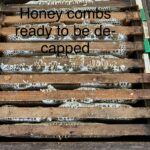 This past month I finished taking off my summer supers of honey, ready for extraction as you saw last month and the month before. When a super is removed from the hive, it is important to realise that the space in the hive is reduced, so I always replace it with an empty super. In fact, what I do these days is to remove one frame at a time from the full super and replace it with an empty frame. That way the bees keep the super case itself and get empty frames to refill – easier for me and less disruptive for the bees. This means that the volume of the hive remains the same and the bees do not get congested.
This past month I finished taking off my summer supers of honey, ready for extraction as you saw last month and the month before. When a super is removed from the hive, it is important to realise that the space in the hive is reduced, so I always replace it with an empty super. In fact, what I do these days is to remove one frame at a time from the full super and replace it with an empty frame. That way the bees keep the super case itself and get empty frames to refill – easier for me and less disruptive for the bees. This means that the volume of the hive remains the same and the bees do not get congested.
However, with my jumbo Langstroth poly hive, I not only do not have any replacement super cases, I also don’t have any more Langstroth frames (and I’m too tight to actually spend money on actually buying either), so what I have been doing this year is taking out two or three frames at a time, leaving an empty space where they were.
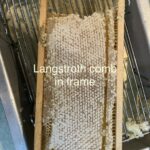 Since the frames are also too big for my extractor, I have made “cut comb” from the frames of honey comb by simply cutting the whole comb out of its frame.
Since the frames are also too big for my extractor, I have made “cut comb” from the frames of honey comb by simply cutting the whole comb out of its frame.
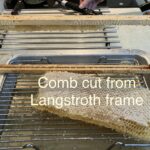
This is then cut into correct size blocks of cut comb for the containers I have.
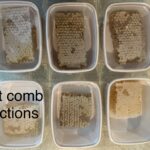
The following day, I return the empty frames (with a starter strip of comb and honey left in) and remove another two or three more full combs. The time that there is a void where the frames were is not long enough for the bees to do anything about it and the bees just carry on as normal – they actually took no notice of me whatsoever as I brushed them off the combs into the hive – but if I left such a void in the brood chamber, the bees would immediately start drawing new comb in the void to maintain the integrity of the brood chamber. Quite a useful ploy.
September is often the month for feeding the bees for most beekeepers. The summer honey crop has been removed from the hives, the summer flowers have finished yielding their nectar, and the ivy has yet to start flowering and yielding its nectar, so the bees have no source of food during this gap. There is therefore always a danger that our bees will starve if a close eye is not kept on their food situation. Coupled with that, those beekeepers who treat their bees to control Varroa numbers are faced with a dilemma of timing. Treatment cannot be applied whilst feeding, yet it is imperative that the Varroa numbers are knocked back in order to allow the development and production of healthy bees to see the colony through the winter. Whilst worker bees only live for about six weeks during the main season, they are able to live for six months during the winter if they are healthy and have a sufficient supply of stores to maintain them.
So what does the beekeeper do? Feed the bees in order that they don’t starve or treat the bees so that they can produce healthy young bees to go into the winter? Well, if the bees are low on stores and at risk of starving, there’s not a lot of point in treating them as they might die out. On the other hand, if the bees are fed then there is a risk that unhealthy bees, affected by Varroa, will make up the bulk of the winter cluster and not live for the required six months. A mix of both is the answer. Feed for a week, for example, then treat, then carry on feeding once the Varroa treatment is finished. Simples!
However, this is not a problem I face and a problem I haven’t needed to face for about fourteen years. I have never liked putting chemicals into my hives so started “treatment free beekeeping” early on in my beekeeping career by gradually reducing the chemicals I put in the hive and replacing them with other innocuous or naturally occurring products, until I reached the point of deciding that I would actually do nothing in the way of Varroa treatment. This meant that some colonies died – inevitably – but I subscribe to Darwin’s “survival of the fittest” philosophy and believe that those bees left to their own devices, which were in strong colonies, would find their own way of dealing with this parasite – and they have!
As you know, I also collect swarms that emanate from “tree” hives in the wild, and these are invariably black bees, a hangover from the original indigenous British Black Bee, of which there are pockets around the UK.
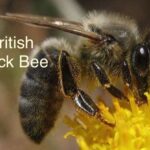 These can be found on Colonsay (Scotland), the Isle of Man, Ireland, Yorkshire, Wales, Devon and, of course, here in Cornwall. They are particularly adapted to our climate of damp, maritime weather, and they are frugal with their winter stores. Even during the season the queen is stopped from laying if there is a shortage of food to feed the larvae, so there is enough food to keep the adult bees alive. They also throw out the drones under these conditions (what’s the point in feeding the blokes if there are no virgin queens around for them to mate with?). They are also very industrious, producing very good honey crops, and are generally very docile. The problem sometimes arises that a black virgin queen will mate with a non-black drone and produce a second cross, F2, which can result in an aggressive colony, but if we increase the number of black colonies that likelihood is reduced. Their greatest advantage is that they do not tolerate Varroa and will control an infestation much better than our imported “yellow” bees
These can be found on Colonsay (Scotland), the Isle of Man, Ireland, Yorkshire, Wales, Devon and, of course, here in Cornwall. They are particularly adapted to our climate of damp, maritime weather, and they are frugal with their winter stores. Even during the season the queen is stopped from laying if there is a shortage of food to feed the larvae, so there is enough food to keep the adult bees alive. They also throw out the drones under these conditions (what’s the point in feeding the blokes if there are no virgin queens around for them to mate with?). They are also very industrious, producing very good honey crops, and are generally very docile. The problem sometimes arises that a black virgin queen will mate with a non-black drone and produce a second cross, F2, which can result in an aggressive colony, but if we increase the number of black colonies that likelihood is reduced. Their greatest advantage is that they do not tolerate Varroa and will control an infestation much better than our imported “yellow” bees
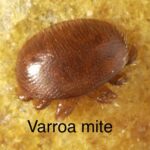 The Varroa mite has spread globally. It was first spotted in Devon in 1992. In conjunction with Deformed Wing Virus, which it vectors by piercing the bee’s cuticle to feed, thereby introducing the virus, Varroa has killed millions of honeybee (Apis mellifera) colonies. This has forced Northern hemisphere beekeepers into using miticides (chemicals) to avoid mass colony losses. However, in many Southern hemisphere countries widespread treatment did not occur either because miticides were prohibitively expensive, or because a centralised choice was made not to treat, both allowing selection to act. The Varroa mite initially caused high losses before mite-resistance appeared in the honeybee populations, as it did with my bees. Initially, however, mite-resistance was only associated with African and Africanised honeybees, although recently, several isolated mite-resistant European honeybee populations have appeared. A study of the mite resistance in Cuba found high rates of recapping of infested worker cells (77%). This is where the bees sense the presence of Varroa under the sealed cappings covering the larvae and uncap those cells and eject the Varroa mites from within. Studies showed a high removal of mites (80%) and corresponding low mite fertility (r = 0.77). These are all traits found in all naturally evolved Varroa-resistant populations. The study showed that Cuba has the world’s largest European mite-resistant honey bee population with 220,000 colonies that have been treatment-free for over two decades, illustrating the power of natural selection.
The Varroa mite has spread globally. It was first spotted in Devon in 1992. In conjunction with Deformed Wing Virus, which it vectors by piercing the bee’s cuticle to feed, thereby introducing the virus, Varroa has killed millions of honeybee (Apis mellifera) colonies. This has forced Northern hemisphere beekeepers into using miticides (chemicals) to avoid mass colony losses. However, in many Southern hemisphere countries widespread treatment did not occur either because miticides were prohibitively expensive, or because a centralised choice was made not to treat, both allowing selection to act. The Varroa mite initially caused high losses before mite-resistance appeared in the honeybee populations, as it did with my bees. Initially, however, mite-resistance was only associated with African and Africanised honeybees, although recently, several isolated mite-resistant European honeybee populations have appeared. A study of the mite resistance in Cuba found high rates of recapping of infested worker cells (77%). This is where the bees sense the presence of Varroa under the sealed cappings covering the larvae and uncap those cells and eject the Varroa mites from within. Studies showed a high removal of mites (80%) and corresponding low mite fertility (r = 0.77). These are all traits found in all naturally evolved Varroa-resistant populations. The study showed that Cuba has the world’s largest European mite-resistant honey bee population with 220,000 colonies that have been treatment-free for over two decades, illustrating the power of natural selection.
 Cuban honeybees are also highly productive, with 40–70kg of honey produced annually per colony, and are mild mannered. This makes Cuba an excellent example of what is possible when honeybees are allowed to adapt naturally to Varroa with minimal human interference.
Cuban honeybees are also highly productive, with 40–70kg of honey produced annually per colony, and are mild mannered. This makes Cuba an excellent example of what is possible when honeybees are allowed to adapt naturally to Varroa with minimal human interference.
I am currently being invited to give talks to our Cornish beekeeping groups about my methods, so I’m hopeful that this sustainable approach to beekeeping will catch on.
I’ll finish with an update on the Asian Hornet.
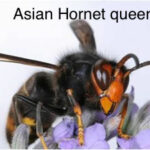 It is still trying to establish in the UK,so we must remain vigilant. The newly-hatched queens will be looking to hibernate somewhere over winter and can be seen at this time. Several hornets were captured last week in Rayleigh, Essex on 27th of September. A search is under way for the nest but it might be too late to kill the new queens if they have already left, which does not augur too well for next year. Also, a single hornet was captured in Felixstowe, Suffolk on 29 April. The nest was found and destroyed.
It is still trying to establish in the UK,so we must remain vigilant. The newly-hatched queens will be looking to hibernate somewhere over winter and can be seen at this time. Several hornets were captured last week in Rayleigh, Essex on 27th of September. A search is under way for the nest but it might be too late to kill the new queens if they have already left, which does not augur too well for next year. Also, a single hornet was captured in Felixstowe, Suffolk on 29 April. The nest was found and destroyed.
Finally, The British Beekeepers’ Association are celebrating the first National Honey Day on 21st October. They are encouraging everybody to buy a jar of local honey produced by bees here in the UK.
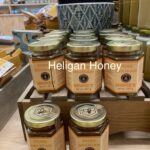 Not only do they want to ensure people are aware of all the benefits honey provides but also are seeking to celebrate the pleasure of eating honey. Remember, it has been found in the Egyptian tombs and is often depicted being collected by bees in cave drawings, but what Trading Standards would make of a “Sell by” date of 5022 I cannot imagine!!
Not only do they want to ensure people are aware of all the benefits honey provides but also are seeking to celebrate the pleasure of eating honey. Remember, it has been found in the Egyptian tombs and is often depicted being collected by bees in cave drawings, but what Trading Standards would make of a “Sell by” date of 5022 I cannot imagine!!
Colin Rees 01872 501313 07939 971104 colinbeeman@aol.com

